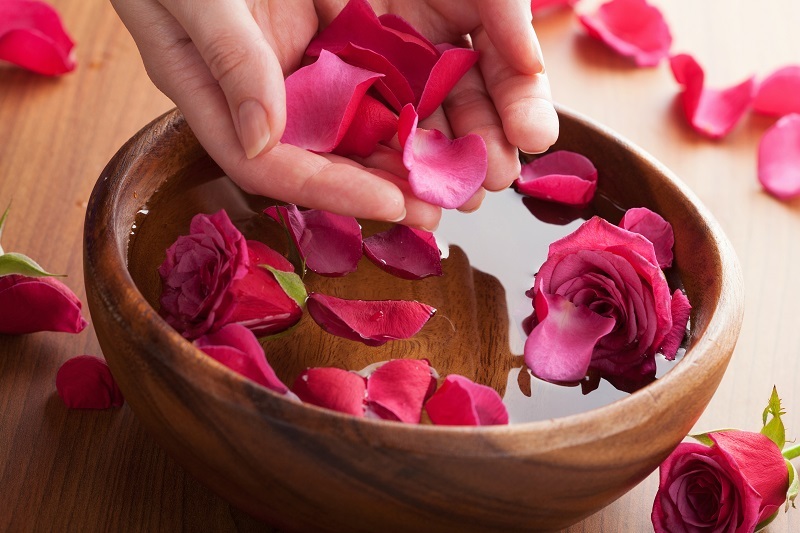Unlock the Mysteries of Orchid Maintenance
Posted on 02/07/2025
Unlock the Mysteries of Orchid Maintenance
Orchids are among the most captivating and diverse flowering plants, yet their care often seems shrouded in mystery. Whether you're a budding gardener or a seasoned plant enthusiast, understanding the art of orchid maintenance can feel daunting. But fear not! This comprehensive guide will unlock the secrets to successful orchid care, helping you nurture healthy, blooming plants year after year. Read on as we demystify orchid care, from basic needs to advanced tips, transforming your approach to orchid maintenance.
Table of Contents
- Understanding Orchids
- Essential Orchid Care Tips
- Watering Your Orchids
- Orchid Potting Mix and Repotting
- Light and Temperature Requirements
- Fertilizing Orchids Effectively
- Pruning and Grooming
- Common Orchid Pests and Diseases
- Troubleshooting Orchid Problems
- Advanced Orchid Maintenance Tips
- Conclusion
Understanding Orchids: Nature's Exotic Gems
With over 25,000 species and countless hybrids, orchids are one of the largest plant families. These unique flowers captivate horticulturists and hobbyists alike with their architectural blooms and remarkable adaptability. Before diving into the specifics of orchid plant care, let's explore the fundamental characteristics that make these beauties both alluring and a little mysterious.
The Basics of Orchid Botany
- Epiphytic Orchids grow on trees in their natural habitats, drawing moisture and nutrients from the air and debris around them. Popular examples include Phalaenopsis and Cattleya.
- Terrestrial Orchids thrive in soil. Paphiopedilum (Lady Slipper) is a well-known terrestrial orchid.
- Sympodial vs. Monopodial Growth: Orchids grow either from a single stem or multiple stems, affecting everything from their maintenance practices to their repotting needs.
Essential Orchid Care Tips for Thriving Blooms
Orchid maintenance doesn't have to be complicated. With a keen eye for detail and a bit of patience, you can master the basics of orchid care. Here are the cornerstones of healthy orchid cultivation:
- Choose the Right Orchid Variety: Start with beginner-friendly orchids like Phalaenopsis (Moth Orchid) or Dendrobium, which are more forgiving and readily available.
- Provide Adequate Light: Orchids need bright, indirect sunlight. Too much direct sun can burn leaves, while too little stifles growth.
- Maintain Proper Humidity: Most orchids thrive in humidity levels between 40% and 60%.
- Use the Right Potting Mix: Orchids prefer loose, well-draining mixes--never regular potting soil.
- Stick to a Consistent Watering Schedule: Overwatering or underwatering is a surefire way to impair your orchid's health.
Watering Orchids: Striking the Perfect Balance
How Often Should You Water Orchids?
Determining the right watering frequency is one of the greatest mysteries in orchid maintenance. Factors like orchid variety, potting medium, and your home environment all play crucial roles.
- Phalaenopsis orchids often require watering every 7-10 days.
- Orchids in bark-based mixes dry out faster than those in sphagnum moss.
- During hotter months or in dry climates, increase your watering frequency.
Key Watering Techniques
- Soak, Don't Sprinkle: Drench the roots thoroughly but allow the potting mix to dry out before the next watering.
- Avoid Waterlogging: Orchids hate "wet feet," which can quickly lead to root rot.
- Check the Roots: Healthy orchid roots are green and plump. If they're shriveled or brown, it's time to adjust your watering routine.
Tip: Water your orchids in the morning to give foliage time to dry, preventing mold and bacteria growth.
Orchid Potting Mix and Repotting: When and How?
Unlike traditional houseplants, orchids require specialized growing mediums. Understanding the right time and method for repotting is essential for long-term orchid maintenance.
Components of an Ideal Orchid Potting Mix
- Bark Chips: Provide aeration and mimic the orchids' natural habitat.
- Sphagnum Moss: Retains moisture but needs monitoring to avoid waterlogging.
- Perlite or Charcoal: Enhances drainage and prevents compaction.
- Coconut Husk: An eco-friendly alternative to bark; holds moisture while letting air through.
How and When to Repot Orchids
- Repot every 1-2 years or when you notice decomposed potting mix or outgrown containers.
- Choose a pot just larger than the root mass, with ample drainage holes.
- Gently loosen roots and remove old mix before transferring to fresh substrate.
- Water thoroughly after repotting, but let the plant acclimate before resuming your normal care schedule.
Light and Temperature: Creating Ideal Conditions for Orchids
One of the mysteries of successful orchid maintenance lies in reproducing their native tropical environments, especially when it comes to light and temperature.
The Right Light: Avoiding Burn and Blight
- Bright, indirect light is key. An east- or west-facing window usually offers the right intensity.
- Leaf color is your clue: Healthy leaves are light to medium green. Dark green means too little light; yellow or reddish hints warn of too much.
- Artificial grow lights can supplement natural light, especially in winter months or low-light conditions.
Temperature Ranges for Thriving Orchids
- Most orchids prefer daytime temperatures between 65?F and 80?F (18?C to 27?C).
- Nights should be at least 10?F (5?C) cooler to stimulate blooming cycles.
- Keep orchids away from cold drafts, heaters, and air conditioners.
Fertilizing Orchids: Nourishing for Spectacular Blooms
Feeding your orchids properly is an essential--but sometimes confusing--aspect of orchid plant care. Over- or under-fertilizing can damage these sensitive plants.
Best Practices for Orchid Fertilization
- Use a balanced, water-soluble orchid fertilizer--look for 20-20-20 or similar formulas.
- Apply at half strength every 2-4 weeks during the growing season (typically spring and summer).
- Flush the potting mix with plain water every month to prevent fertilizer salt buildup.
- Avoid fertilizing when the plant is dormant or not actively growing.
Pro Tip: More is not better--orchids thrive on half-strength solutions rather than concentrated doses.
Pruning and Grooming: Keeping Orchids Healthy and Beautiful
Regular grooming is a secret to unlocking orchid longevity. Here's how to keep your plant in prime shape:
- Remove faded flower spikes after blooming to redirect energy into root and leaf growth.
- Snip away any dead or yellowed leaves with sterilized scissors to avoid spreading disease.
- Wipe leaves occasionally with a damp cloth to clear dust and improve photosynthesis.
- Maintain a tidy growing area to deter pests and fungal issues.
Common Orchid Pests and Diseases: Prevention and Cure
Even with the best care, orchids can become targets for pests and diseases. The key to effective orchid maintenance is early detection and prompt action.
Typical Orchid Pests and How to Defeat Them
- Scale insects: Look for small, brown bumps on leaves and stems. Remove by hand and treat with insecticidal soap.
- Spider mites: Fine webbing and speckled leaves signal spider mite activity. Boost humidity and wipe leaves with a mild solution to control outbreaks.
- Aphids: These tiny insects congregate on new growth. Wash off with water or use neem oil spray.
- Mealybugs: White, fluffy bugs at leaf joints must be wiped away and treated with insecticide if persistent.
Orchid Diseases: Symptoms and Solutions
- Root or Crown Rot: Caused by overwatering; remove rotting material and repot in fresh mix.
- Leaf Spot and Blight: Water on leaves and poor air circulation contribute to fungal infections. Cut away affected areas and improve airflow.
- Viral Infections: Uncommon, but incurable. Destroy affected plants to protect others.
Tip: Healthy, unstressed orchids are naturally more resilient to pests and diseases.
Troubleshooting: How to Solve Common Orchid Issues
- Leaves turning yellow? Check if it's natural leaf aging, or signs of overwatering or sunburn.
- No blooms? Your orchid may need more light, a cooler night temperature, or a rest period.
- Soft, mushy roots? Overwatering or poor drainage; repot and improve your watering routine.
- Wrinkled, limp leaves? Underwatering, root loss, or salt buildup--examine the root system and flush the mix.
Keeping a close watch and reacting quickly can make all the difference in your orchid's vitality.
Advanced Orchid Maintenance: Take Your Skills to the Next Level
Air Circulation and Humidity Boosting
- Use a humidity tray: Place a shallow tray of water beneath pots (not touching the roots) to increase humidity naturally.
- Consider a small fan: Gentle air movement discourages mold and strengthens plant tissues.
Orchid Propagation
- Keiki propagation: Some orchids, like Phalaenopsis, produce "keikis" (baby plants) that can be separated once roots form.
- Division: Mature sympodial orchids can be divided, ensuring each segment has at least three healthy pseudobulbs.
Encouraging Re-blooming
- Cool night shock: Many orchids need a drop in temperature at night to trigger bud production.
- Rest periods: Certain species require a dry rest phase after blooming. Hold off on fertilizing and reduce watering until new growth crops up.
Conclusion: Embrace the Joy of Orchid Maintenance
Unlocking the mysteries of orchid maintenance isn't reserved for expert botanists. With the right knowledge, patience, and a touch of curiosity, anyone can nurture these exquisite plants. Remember to meet their unique needs for light, water, humidity, and nourishment--and don't neglect routine pruning and vigilance in pest management.
By following the strategies and insider tips outlined above, you'll not only demystify the art of orchid care but also enjoy the reward of vibrant, long-lasting blooms. Embrace the adventure, and unlock the secrets of stunning orchids in your home or garden for years to come!
Ready to begin your own orchid journey? Share your favorite tips or questions about orchid maintenance in the comments below!


Latest Posts
Long-Lasting Blooms: A Top 12 Countdown
Unearth the Significance of Your Birth Flower to Understand Yourself
Guide to Making Your Poinsettias Thrive Longer






